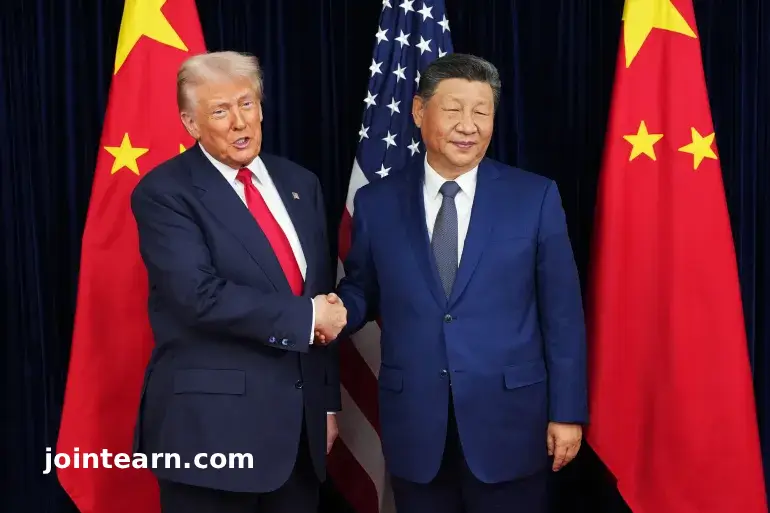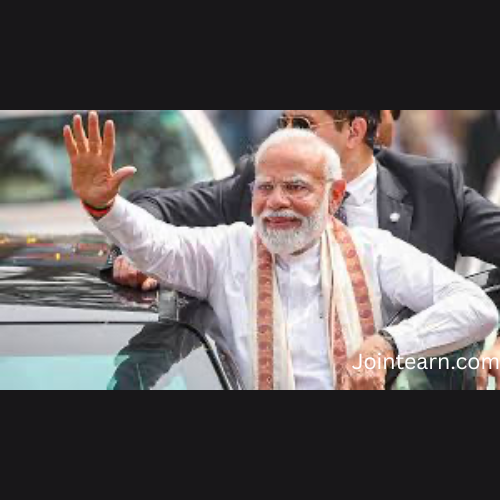
Gyeongju, South Korea — October 31, 2025
The latest meeting between US President Donald Trump and Chinese President Xi Jinping in South Korea has offered a vivid display of the shifting balance of power between the world’s two largest economies. Once defined by Washington’s dominance, the US–China relationship now reflects a far more evenly matched rivalry, underscored by China’s growing economic resilience and strategic leverage.
A Trade Truce with Symbolic Power Shifts
Trump and Xi met on the sidelines of the APEC Summit in Gyeongju, South Korea, where both leaders agreed to a partial rollback of technology-related export controls — a modest yet significant concession from Washington.
While the meeting featured smiles, handshakes, and scripted pleasantries, analysts say the underlying message was unmistakable: China now negotiates from a position of strength.
During his address, Xi Jinping described the two nations as “captains steering a shared ship,” emphasizing parity and partnership.
“In the face of winds, waves and challenges, we should stay the right course, navigate through the complex landscape, and ensure the steady sailing forward of the giant ship of China–US relations,” Xi declared.
Observers noted that this metaphor symbolized China’s view of itself as a co-equal superpower, not a subordinate player in global affairs.
From Trade War to Tactical Balance
Since Donald Trump launched his trade war in 2018, the geopolitical and economic relationship between the US and China has undergone a dramatic transformation. Initially, Trump’s tariffs and export restrictions sought to curb Beijing’s rise by targeting its technology, steel, and agricultural sectors.
But over time, China adapted, bolstering its economy against US pressure and enhancing its ability to retaliate through strategic industries such as rare earth minerals and agriculture.
“China has definitely increased its stature while the US has diminished its own,” said Dexter Roberts, a non-resident senior fellow at the Atlantic Council’s Global China Hub. “Beijing now sees itself as far closer to a peer than ever before.”
China’s Rare Earths: The Leverage Behind Beijing’s Confidence
A turning point came when Beijing tightened export controls on rare earth elements — a category of 17 critical minerals used in smartphones, electric vehicles, wind turbines, and even fighter jets.
By requiring global companies to obtain Chinese approval before exporting goods containing rare earths, Beijing demonstrated its capacity to weaponize supply chains as a tool of negotiation.
China currently controls roughly 70% of global rare earth mining and 90% of processing and separation, making it a linchpin in global technology manufacturing.
“Beijing’s ability to use export controls on rare earths has been decisive in shifting negotiating leverage,” said Gabriel Wildau, senior vice president at Teneo, a global business advisory firm. “It signals that China can restrain other governments from taking coercive measures against it.”
Agriculture: Beijing’s Countermeasure Against Washington
In another calculated move, China slashed its reliance on US agricultural imports, particularly soybeans, one of America’s most profitable export crops. By pivoting to Brazil and Argentina, China cut the share of US soybeans in its import mix by more than half before formally halting purchases in May.
The impact was immediate: farmers across Iowa, Nebraska, and Indiana faced steep financial losses, creating a political liability for Trump’s Republican Party ahead of the 2026 midterm elections.
Analysts argue this tactic revealed Beijing’s growing sophistication in managing political pressure inside the US, turning Trump’s own electoral base into an economic flashpoint.
“China figured out that Trump is transactional,” said Roberts. “They know he values deals above all else, and they’ve learned how to use that to their advantage.”
The Trade Truce: A Tactical Pause, Not a Resolution
The newly announced trade truce largely returns both nations to the pre-April 2025 status quo, when Trump unveiled his so-called “liberation day tariffs”.
Under the agreement:
- China will resume limited purchases of US soybeans.
- Beijing will defer export controls on five of twelve rare earth minerals (while keeping restrictions on seven others).
- The US will cut its fentanyl-linked tariff from 20% to 10%, a concession viewed as a diplomatic win for China.
Despite the thaw, experts caution that the truce represents a pause, not a peace. With technology rivalry, military competition, and ideological differences intensifying, both sides remain locked in a strategic stalemate.
Analysts: China’s Hand Has Strengthened
Experts across Asia and Europe agree that China’s strengthened economic resilience and diplomatic posture have tilted the global power dynamic.
“Beijing will see this as a good result,” said Steve Tsang, director of the SOAS China Institute in London. “Xi Jinping will now look to consolidate his successes when Trump visits China in April.”
In China, however, commentary has been more direct. Wang Wen, dean of the Chongyang Institute for Financial Studies at Renmin University, described Trump’s trade war as “a failure”.
“China’s strength has compelled the US to learn respect,” Wang said. “The two nations have entered an era of equality. The days of unilateral US containment are over.”
The Ongoing Rivalry: Economic Power Meets Political Will
Despite China’s momentum, geopolitical experts warn that the US–China rivalry remains cyclical and fluid. As each nation develops countermeasures, neither is likely to maintain dominance for long.
“The US had an advantage with technology controls, then China weaponized rare earths,” said Ja Ian Chong, political science professor at the National University of Singapore. “In future, the US will adapt again. This back-and-forth is how great power competition evolves.”
With both economies deeply intertwined and neither side willing to concede ground, the Gyeongju summit symbolizes a new phase in global politics—one defined less by hierarchy and more by mutual dependency and rivalry.


Leave a Reply